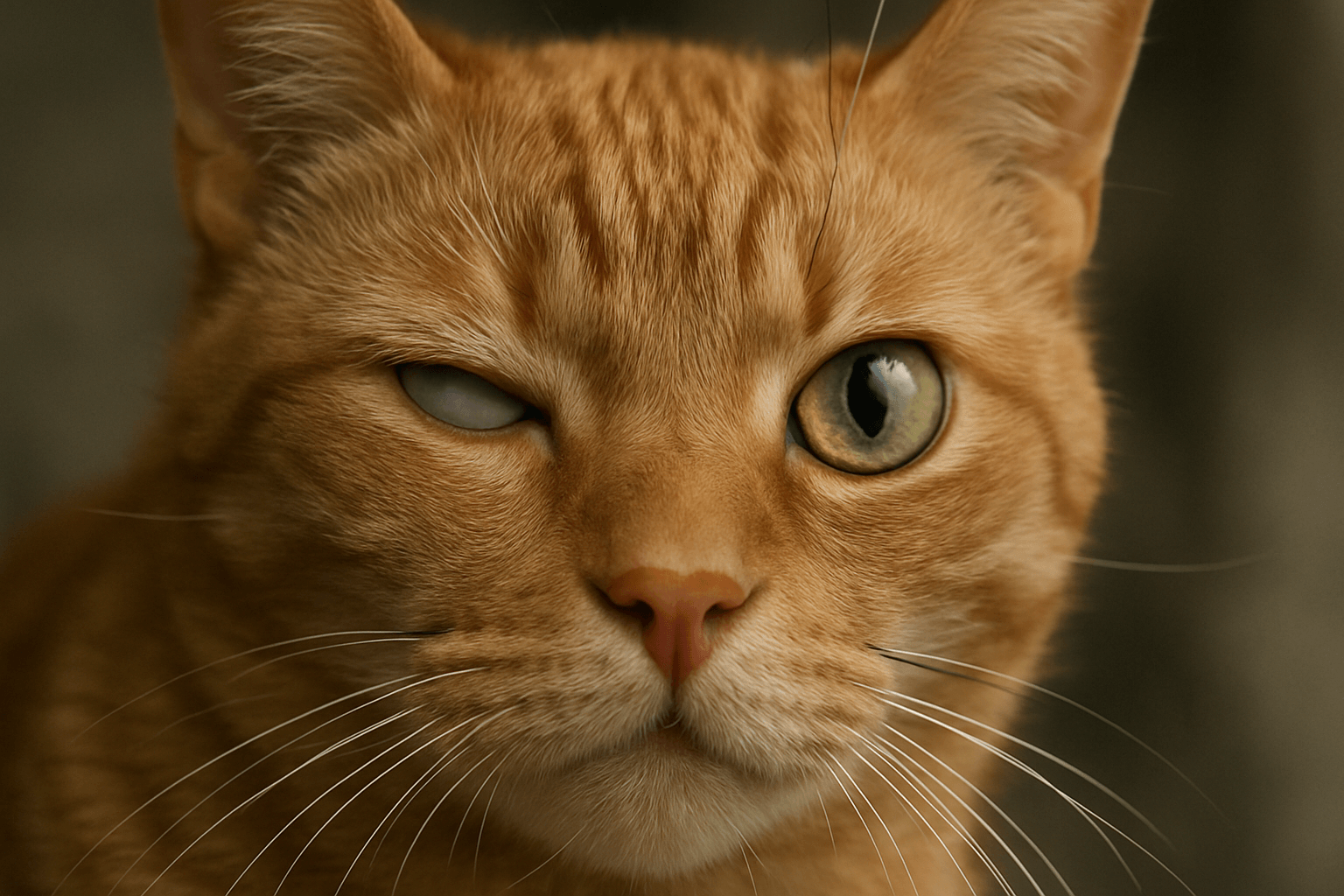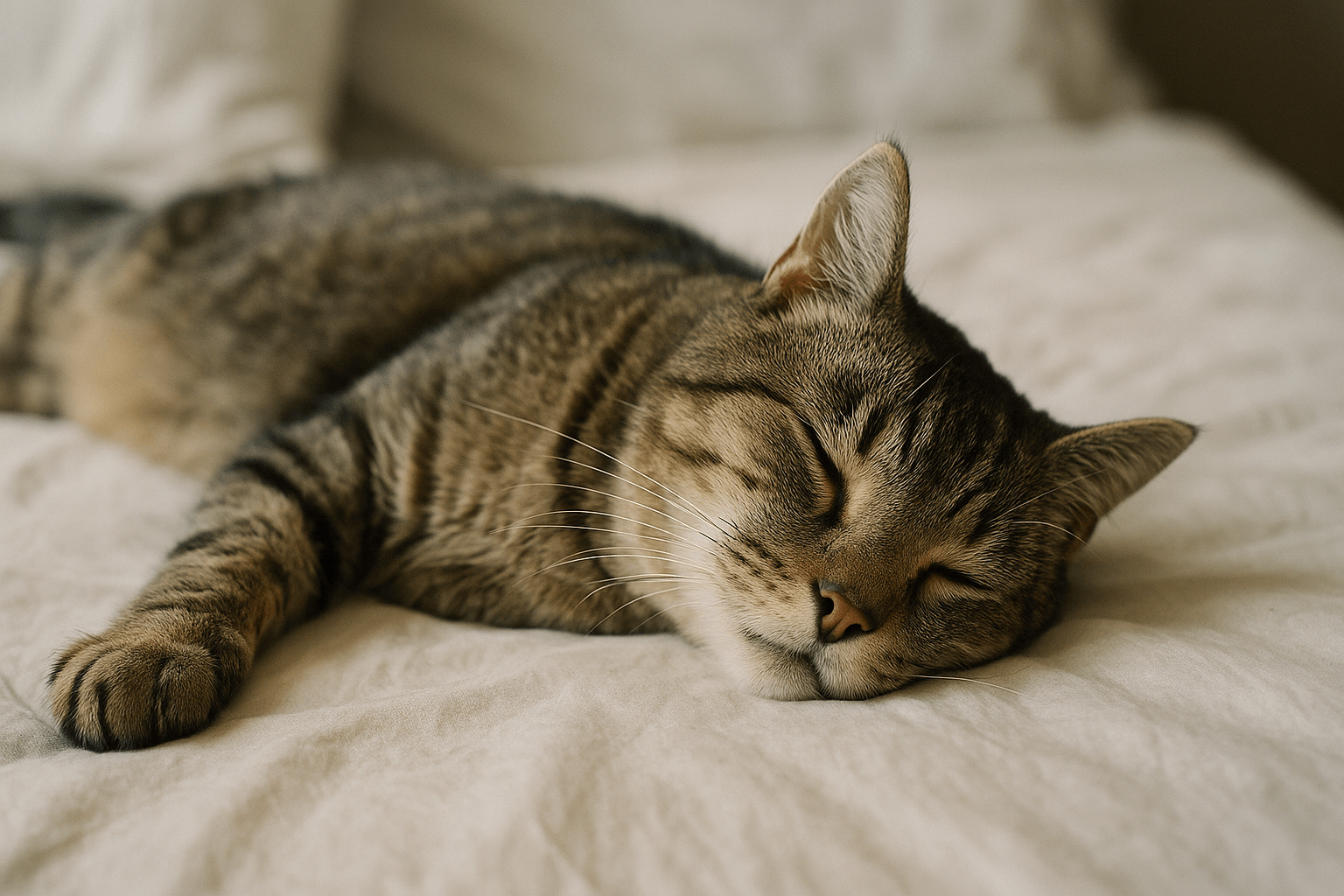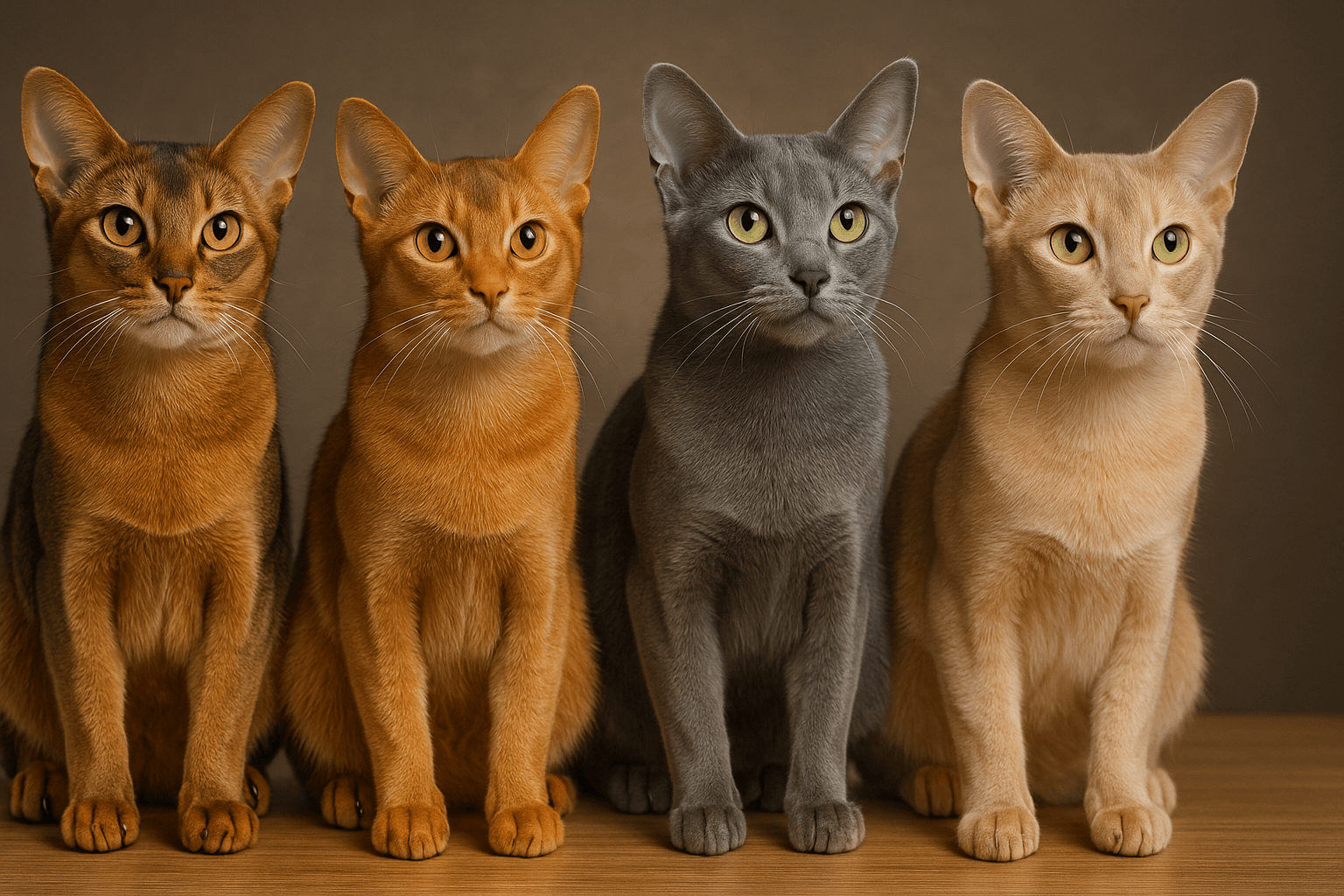Aqueous Misdirection Syndrome in Cats: What You Need to Know
Aqueous misdirection syndrome, also known as malignant glaucoma, is a rare but serious condition that can affect a cat’s eyes. This syndrome occurs when the normal flow of aqueous humor—the fluid inside the eye—is disrupted, leading to increased intraocular pressure and potential complications. While it is more commonly discussed in human ophthalmology, cats are not immune to this condition, especially those predisposed to eye issues or recovering from certain surgeries. Understanding the causes, symptoms, and treatment options for aqueous misdirection syndrome is crucial for ensuring your feline friend maintains optimal eye health. In this blog post, we’ll explore everything you need to know about this condition and how to support your cat if they are affected.
Understanding the Causes of Aqueous Misdirection Syndrome in Cats
To effectively manage aqueous misdirection syndrome, it’s important to understand its underlying causes. This condition often arises due to disruptions in the delicate balance of fluid dynamics within the eye. Below are some common factors that may contribute to its development.
Post-Surgical Complications:
Cats recovering from cataract surgery or other intraocular procedures are at higher risk of developing aqueous misdirection syndrome due to changes in fluid flow.Anatomical Abnormalities:
Structural irregularities within the eye, such as a shallow anterior chamber, can predispose cats to this condition.Inflammation or Trauma:
Inflammatory conditions or injuries to the eye can disrupt normal fluid movement, increasing intraocular pressure.Genetic Predisposition:
Certain breeds, particularly those prone to eye problems like Persians or Siamese cats, may have a higher likelihood of developing this syndrome.Medication Side Effects:
Some medications used to treat glaucoma or other eye conditions may inadvertently trigger aqueous misdirection syndrome.
By identifying these potential causes, veterinarians can better diagnose and address the root of the problem, improving outcomes for affected cats.
Recognizing Symptoms of Aqueous Misdirection Syndrome
Early detection of aqueous misdirection syndrome is critical for preventing long-term damage to your cat’s vision. Keep an eye out for these signs, which may indicate the presence of this condition.
Cloudy or Bulging Eyes:
A noticeable change in the appearance of your cat’s eyes, such as cloudiness or bulging, can signal increased intraocular pressure.Excessive Tearing or Squinting:
Cats with eye discomfort may tear up excessively or squint frequently in response to pain or irritation.Reduced Vision or Blindness:
Sudden difficulty navigating familiar spaces may indicate vision loss caused by elevated intraocular pressure.Behavioral Changes:
Cats in pain may become lethargic, irritable, or less interested in activities they once enjoyed.Redness or Swelling:
Visible redness or swelling around the eye can be a sign of inflammation or pressure buildup.
If you notice any of these symptoms, it’s essential to consult your veterinarian promptly to prevent further complications.
Check this guide 👉Understanding Swimmer Syndrome in Cats: Best 7 Tips!
Check this guide 👉Understanding Horners Syndrome in Cats: Best 7 Health Tips!
Check this guide 👉Understanding Haws Syndrome in Cats: Best 7 Expert Care Tips

Symptoms of Aqueous Misdirection Syndrome | Potential Treatment Options |
|---|---|
Cloudy or bulging eyes | Medications to reduce intraocular pressure |
Excessive tearing or squinting | Laser therapy to correct fluid flow |
Reduced vision or blindness | Surgical intervention for severe cases |
Behavioral changes | Anti-inflammatory drugs for swelling |
Redness or swelling | Monitoring and follow-up care |
Treatment Options for Aqueous Misdirection Syndrome
Managing aqueous misdirection syndrome typically involves a combination of medical, surgical, and supportive interventions. The chosen approach depends on the severity of the condition and your cat’s overall health.
Medications to Lower Intraocular Pressure:
Prescription eye drops or oral medications can help reduce pressure by improving fluid drainage or decreasing fluid production.Laser Therapy:
Laser procedures may be used to create new pathways for fluid flow, alleviating pressure within the eye.Surgical Intervention:
In advanced cases, surgery may be necessary to correct structural abnormalities or remove blockages causing the syndrome.Anti-Inflammatory Treatments:
Steroids or nonsteroidal anti-inflammatory drugs (NSAIDs) can help reduce inflammation and associated discomfort.Regular Monitoring:
Frequent veterinary check-ups are essential to track progress and adjust treatment plans as needed.
With timely and appropriate treatment, many cats can recover from aqueous misdirection syndrome and maintain good eye health.
Preventive Measures to Protect Your Cat’s Eye Health
While aqueous misdirection syndrome cannot always be prevented, there are steps you can take to minimize your cat’s risk of developing this condition.
Routine Veterinary Check-Ups:
Regular eye exams can help detect early signs of eye problems before they escalate into serious conditions.Monitoring After Surgery:
If your cat undergoes eye surgery, closely monitor their recovery and report any unusual symptoms to your vet immediately.Avoiding Eye Trauma:
Prevent injuries to your cat’s eyes by keeping them away from sharp objects or aggressive play.Managing Underlying Conditions:
Address chronic conditions like glaucoma or uveitis promptly to reduce the risk of complications.Providing a Safe Environment:
Create a stress-free and hazard-free living space to protect your cat’s overall health and well-being.
Taking these preventive measures can significantly reduce the likelihood of aqueous misdirection syndrome affecting your cat.
Common Misconceptions About Aqueous Misdirection Syndrome
There are several misconceptions surrounding aqueous misdirection syndrome that can lead to confusion or delayed treatment. Here are some myths debunked for clarity.
Myth: Only Older Cats Are Affected:
While older cats may be at higher risk, younger cats can also develop this condition, especially after surgery.Myth: It’s Always Painful:
Early stages may not cause noticeable pain, making regular check-ups crucial for early detection.Myth: Medication Alone Can Cure It:
Severe cases often require surgical intervention in addition to medication.Myth: It’s Rare and Not Serious:
Though rare, untreated cases can lead to irreversible blindness, making it a serious concern.Myth: Prevention Isn’t Possible:
While not all cases can be prevented, proactive measures can significantly reduce risks.
Dispelling these myths helps owners make informed decisions about their cat’s eye health.
How to Support Your Cat During Recovery
If your cat is undergoing treatment for aqueous misdirection syndrome, providing additional support can aid their recovery process.
Create a Calm Environment:
Minimize stress by keeping your home quiet and free from disturbances during recovery.Administer Medications as Directed:
Follow your veterinarian’s instructions carefully to ensure effective treatment.Monitor for Side Effects:
Keep an eye out for adverse reactions to medications and report them to your vet immediately.Encourage Rest:
Limit physical activity to allow your cat’s body to focus on healing.Offer Comfort Items:
Provide soft bedding and familiar toys to keep your cat relaxed and content.
Supportive care plays a vital role in helping your cat recover fully and comfortably.
When to Seek Immediate Veterinary Care
Certain signs indicate that your cat needs urgent attention to address aqueous misdirection syndrome or related complications.
Sudden Vision Loss:
If your cat appears disoriented or unable to navigate, seek emergency care immediately.Severe Eye Pain:
Excessive pawing at the eye or vocalizing in distress signals acute discomfort that requires prompt treatment.Rapid Increase in Eye Size:
A noticeably bulging eye may indicate dangerously high intraocular pressure.Uncontrolled Bleeding or Discharge:
Any abnormal discharge or bleeding from the eye warrants immediate evaluation.Worsening Symptoms Despite Treatment:
If your cat’s condition deteriorates despite ongoing care, consult your vet for further assessment.
Acting quickly in these situations can prevent irreversible damage and improve your cat’s prognosis.
Frequently Asked Questions About Aqueous Misdirection Syndrome in Cats
What is aqueous misdirection syndrome?
It is a condition where the normal flow of fluid inside the eye is disrupted, leading to increased intraocular pressure.
Is aqueous misdirection syndrome painful for cats?
Yes, the condition can cause significant discomfort or pain due to elevated pressure in the eye.
Can this condition lead to blindness?
If left untreated, aqueous misdirection syndrome can result in permanent vision loss or blindness.
How is the condition diagnosed?
Veterinarians use tonometry, ophthalmoscopy, and imaging tests to measure intraocular pressure and assess the eye’s structure.
Is surgery always required?
No, mild cases may be managed with medications, but severe cases often require surgical intervention.
Prioritizing Your Cat’s Eye Health
Aqueous misdirection syndrome is a complex and potentially debilitating condition that requires prompt attention and careful management. By staying informed about its causes, symptoms, and treatment options, you can play an active role in safeguarding your cat’s vision and overall well-being. Remember, early intervention is key—so don’t hesitate to seek veterinary care if you notice any concerning changes in your cat’s eyes. With proper care and vigilance, you can ensure your feline companion enjoys a happy and healthy life.
Why Is My Cats Second Eyelid Showing? Best 7 Expert Tips! Understand causes, health signs, and how to respond when your cat’s third eyelid becomes visible.
How Do I Know If My Cat Died Peacefully? Best 7 Expert Tips! Discover the quiet signs of a peaceful feline passing and find comfort in their final moments.
Cat Allergy Eyes: Best 7 Expert Tips! Discover why your eyes react to cats and learn proven strategies for relief—without giving up your feline friend.
Why Do Abyssinian Cat Colors Matter? Best 7 Expert Tips! Discover the genetics, rare hues, and care secrets behind Abyssinian coat colors for a healthier, happier cat.





